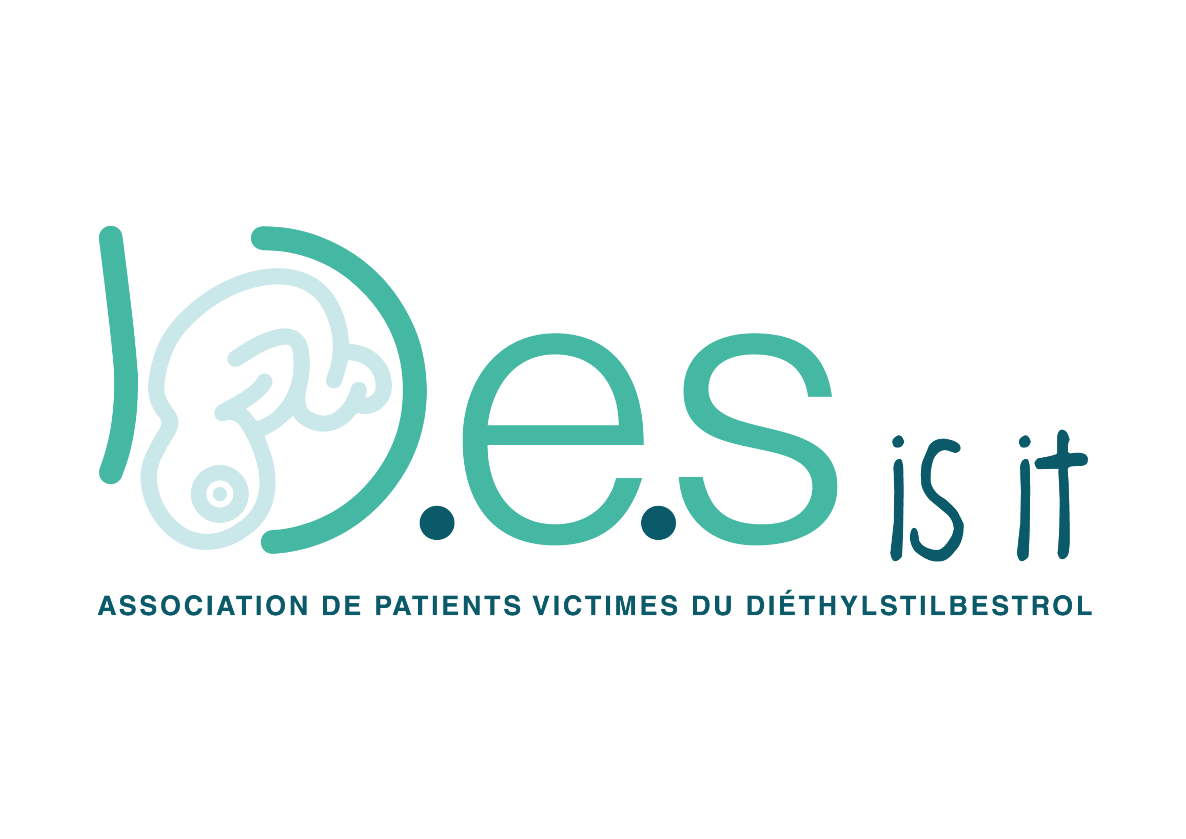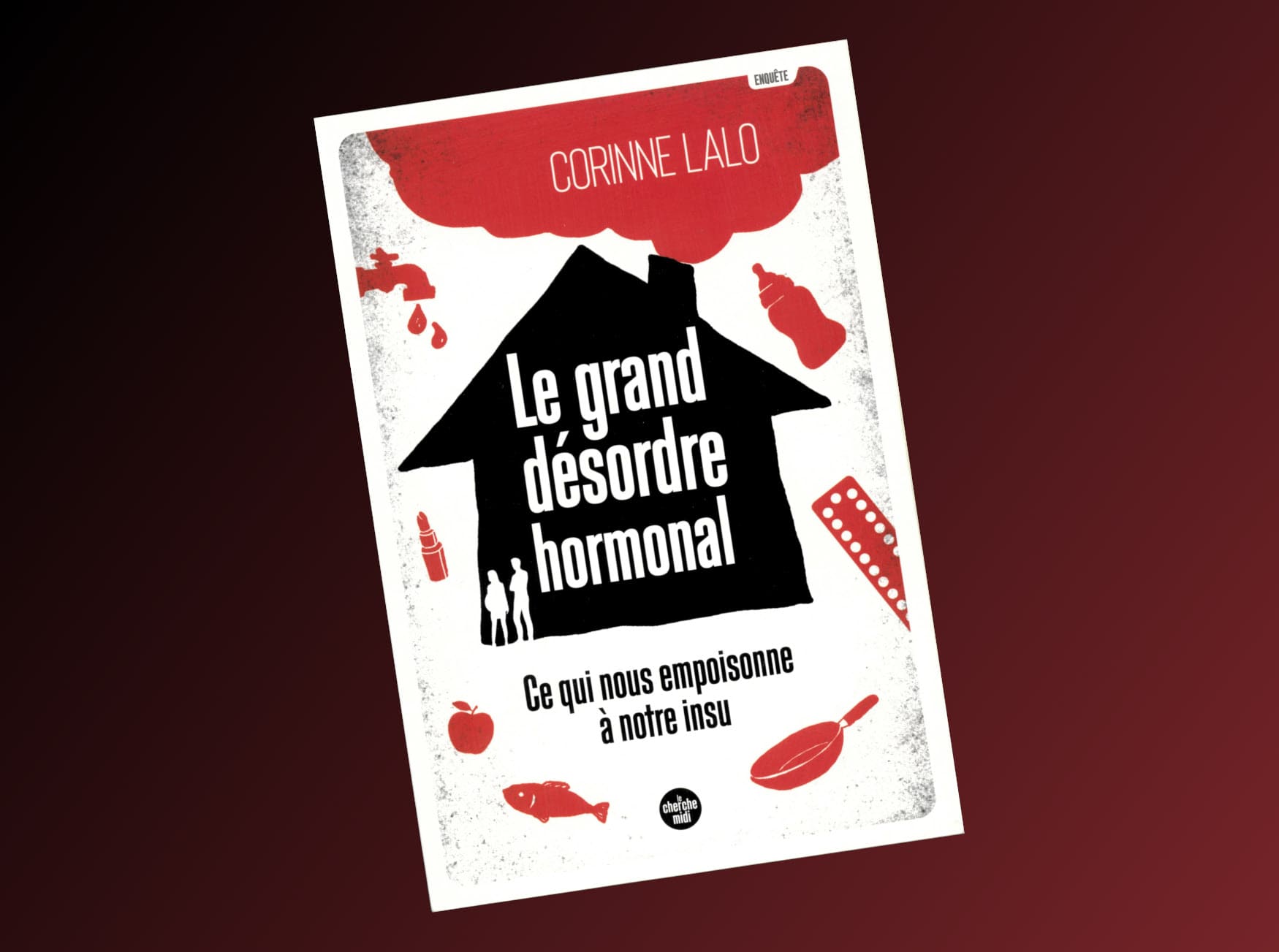
Le grand désordre hormonal : ce qui nous empoisonne à notre insu, by Corinne Lalo - Le Cherche Midi Editor
Endocrine disruptors are synthetic substances that have an effect similar to that of hormone derivatives. In particular, they induce hormonal disorders of sexuality in humans and animals.
Although it was defined in the Wingspread Declaration1 (United States) in 1991, the concept of "endocrine disruptors" can be difficult to grasp. In particular, it seems abstruse to many physicians who do not make the link between exposure to an endocrine disruptor, such as Distilbène (diethylstilbestrol French brand name), and the existence of hormonal disturbances in a victim. It is as if there was an endocrine disruptor on one side, and disturbances of unknown cause on the other.
However, it is indeed the hormonal system that is impacted when exposed to such a substance:
Endocrine disruptor -> Disruption of the endocrine system -> Abnormalities of hormone production, synthesis, transport or receptor -> Hormones
"Le grand désordre hormonal" (The Great Hormonal Disorder) is a relevant title in that it allows us to understand what it is all about: our hormones, which, due to exposure to chemicals, are completely out of balance. Hormones being essential to life, we are all concerned.
Le grand désordre hormonal, the last investigation of Corinne Lalo
Corinne Lalo has been a television reporter for the past thirty years, specializing in the field of health. She has covered major cases such as contaminated blood, the Chernobyl cloud, hepatitis B vaccination, H1N1 flu and Mediator. She is co-author with Patrick Solal of the "Livre noir du médicament" published by Plon and of "Se soigner sans médicaments de A à Z" published by Le Cherche Midi.
Today she publishes her latest investigation, entitled "Le grand désordre hormonal : ce qui nous empoisonne à notre insu" (The Great Hormonal Disorder: what is poisoning us without our knowledge); an alarming assessment of a major health and environmental disaster: the omnipresent hormone disruptors that we sometimes consume voluntarily (for example, the contraceptive pill) without always being fully aware of the chain reactions that they can produce, but also, very often, without even knowing it...
With precise examples and drawings, Corinne Lalo describes and explains the deleterious effects of the six main families of hormone disruptors - all of which come from petrochemicals and are found in: pesticides, plasticizers, perfluorinated compounds, pharmaceutical products, parabens and polybrominated compounds.
From homosexuality in the white ibis to hermaphroditic frogs, from the DES scandal to the bisphenol scandal, from breast cancer to prostate cancer, from micropenis to endometriosis, from obesity to diabetes, from thyroid disorders to autism, this 553-page book - a paving stone in the pond - is likely to make many waves.
Hormone imbalance
Hormones are substances naturally produced by the body. They are very varied and regulate various essential biological mechanisms. Many endocrine glands secrete them, for example: the pituitary gland, the adrenals, the thyroid, the ovaries, the testicles or the pancreas.
To be healthy, a balanced hormonal balance is absolutely essential. This balance differs depending on whether you are a woman or a man. For example, women will have higher estrogen levels and lower testosterone levels than men, and vice versa. This is because, as they say, nature is well done, and their role in the reproductive process is different.
Endocrine disruptors, although foreign to our hormonal signaling, have important hormonal effects. They are indeed able to mimic natural hormones, or bind to hormone receptors, causing marker changes. Thus, the hormonal balance is unbalanced.
Exposure to such poisons at critical times in development2 will have more catastrophic effects than at other times, regardless of dose. This is the case for the undifferentiated gonad stage, i.e., the time of development of the reproductive system in humans:
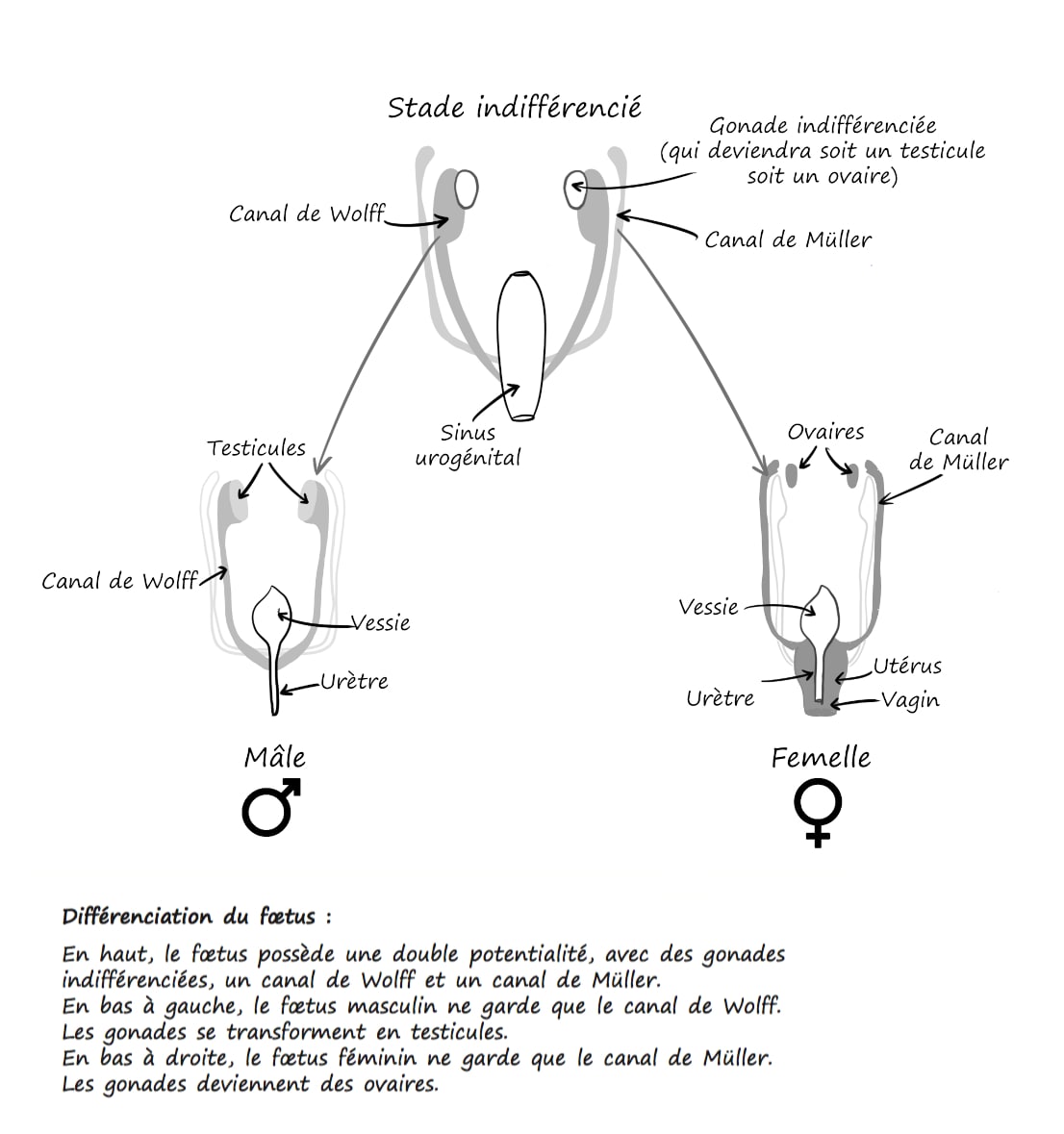
Among the effects of exposure at this critical stage, we find anomalies of sexual differentiation, that is to say a set of genital anomalies often irreversible that will affect the appearance and / or functioning of the reproductive system.
In men, this will result in: hypospadias (abnormality of the position of the urinary meatus), cryptorchidism (defect in the migration of a testicle), micropenis, poor sperm quality or a testosterone level below normal.
Indeed, many of these chemical compounds have an estrogen-mimetic action that will cause not only this feminization of sexual characteristics, but also a decrease in fertility, testicular cancer or even prostate cancer - a hormone-dependent cancer (i.e. estrogens play a role in the proliferation of cancer cells), one of the possible treatments in France of which is none other than... Distilbene! The objective of such a treatment is to saturate the estrogen receptors (we will talk about this later).
These different pathologies of the male reproductive system are grouped under the term "testicular dysgenesis syndrome3" (TDS).
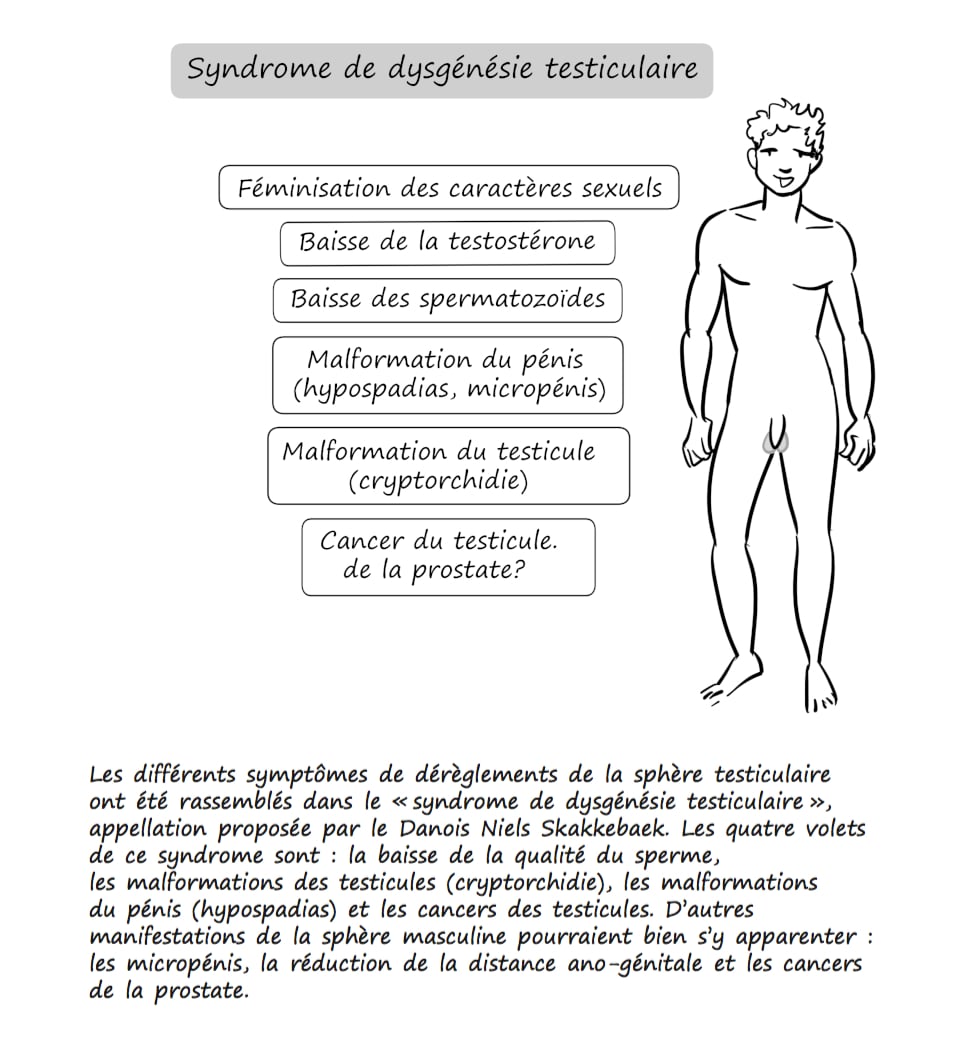
Exposure to hormone disruptors at a critical stage, as described above, will also cause abnormalities in female genital development, which will result in malformations such as a uterus that is too small, a bicervical uterus with a leaky vagina and cervix. There is also a precocious puberty, which is characterized by the appearance of secondary sexual characteristics before the age of 8 (pilosity, menstruation...).
In addition, there is an increased risk of developing certain hormone-dependent cancers (breasts, ovaries, uterus), irregular and painful periods (dysmenorrhea), premenstrual syndrome, polycystic ovaries (PCOS), endometriosis and a significant decrease in fertility.
In women, there may also be an imbalance between testosterone and estrogen, resulting in masculinization (hyperandrogenism).
The author proposes to group these different symptoms under the term "ovarian dysgenesis syndrome" which, today, concerns only premature ovarian failure, with a drawing that allows an overall view:
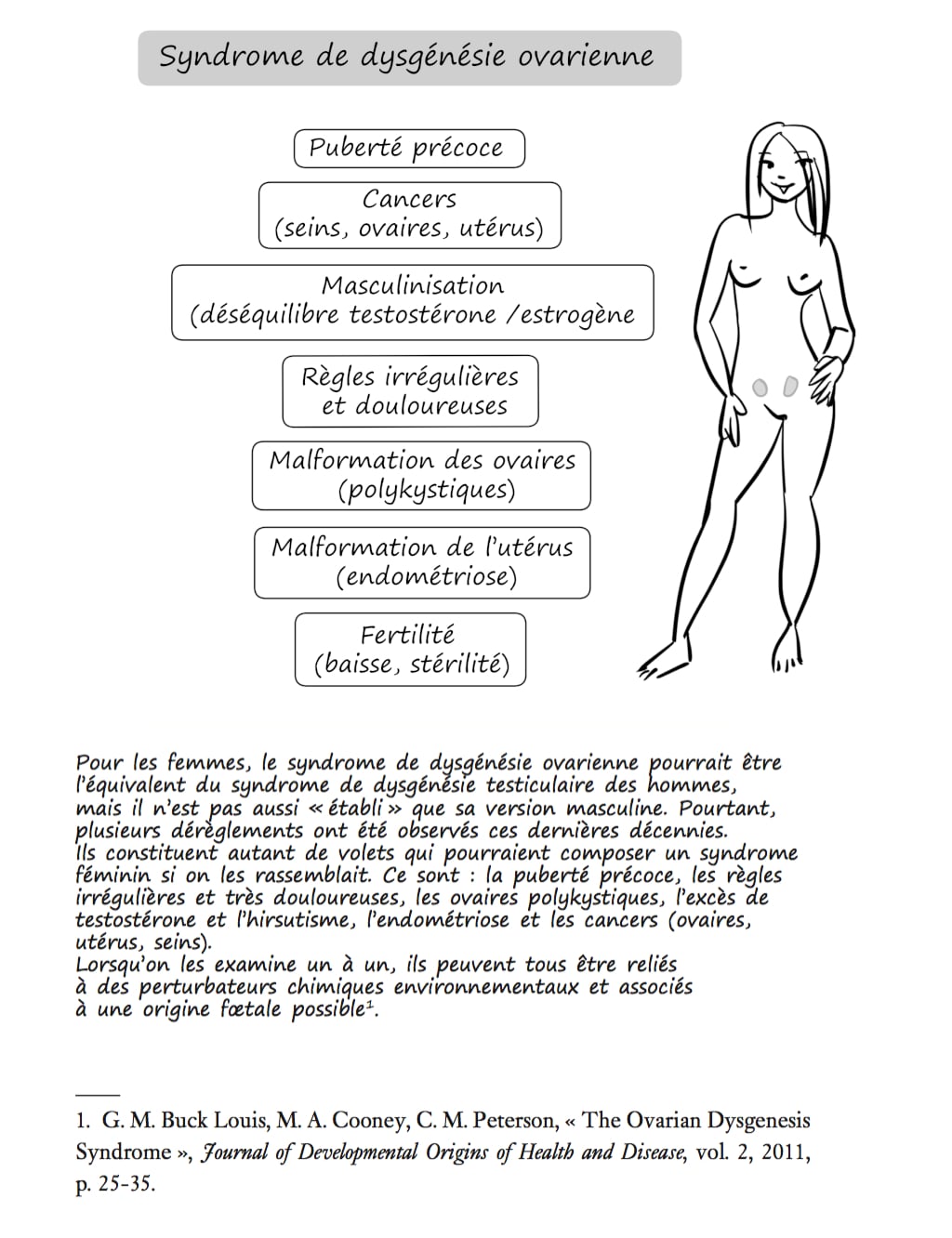
A distinction should be made here between two things in women exposed to hormone disruptors: hyperandrogenism and hyperestrogenism.
Indeed, if hyperandrogenism, often caused by polycystic ovarian syndrome, is characterized by virilization (hairiness, alopecia, infrequent menstruation or amenorrhea...) associated with high levels of male hormones (androgens). ) associated with high levels of male hormones (androgens), while hyperestrogenism, characterized by hyperfeminization, is responsible for early puberty, endometriosis and hormone-dependent cancers such as breast and gynecological cancers.
In both cases, whether women are in hyperandrogenism or hyperestrogenism, the result is a decrease in fertility.
From pesticides to artificial sweeteners, many chemicals are also implicated in the development of obesity and diabetes, which are affecting more and more people.
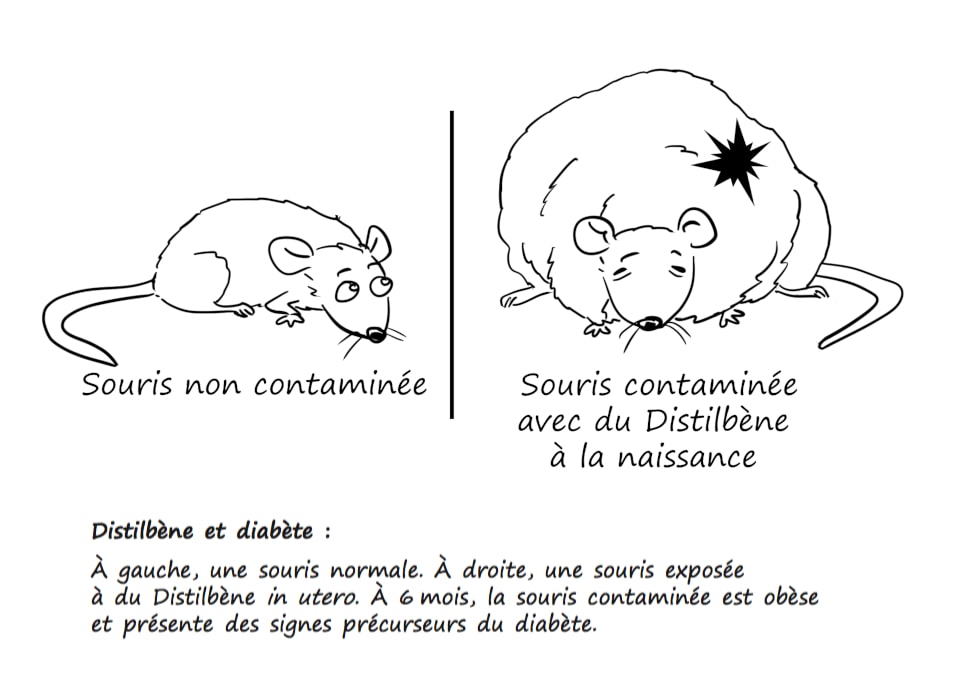
In the case of Distilbene (diethylstilbestrol), the mechanism is quite simple to understand: estrogen means fatty tissue, which means fat storage, which means obesity and diabetes... indeed, chemicals with estrogen-mimetic properties promote the increase of fat cells (in which they accumulate) and weight, and we know that overweight plays a major role in the development of diabetes.
It is for its obesogenic action that DES or similar products have been given to farm animals for years: more meat, more profit!
Breaking the chain of causation
Thyroid, asthma and allergy, autism... many other problems related to hormone disruptors are presented in "The Great Hormone Disorder".
The book is very well constructed and structured. The numerous explanatory drawings illustrate the subject and allow us to understand important notions, not necessarily easy to grasp. At the end of each chapter there is a summary of the main ideas, making it easier to remember the information (a thought for the victims of DES suffering from ADD/ADHD).
It ends with practical advice from the author on how to identify and escape the hormonal disruptors that surround us (microwaves, tap water, non-stick utensils, plastics, etc.) because it is time to take back control of our lives.
"Le grand désordre hormonal" does not try to get rid of the intrinsic complexity of the subject it deals with, on the contrary, it manages to be precise and sharp while remaining accessible, that is its great strength.
No doubt you will have understood: this is an indispensable book.
This is an automatic translation
Credits
Illustrations by Laurent Lalo
Notes
1 [on line] https://www.reseau-environnement-sante.fr/la-declaration-de-wingspread/
2 Professor Marianthi-Anna Kioumourtzoglou explained at the conference "Heritable impacts of diethylstilbestrol (DES)" that children whose grandmother took DES during pregnancy are 36% more likely to have ADHD and that when DES was taken during the first trimester of pregnancy, the risk is even greater, increasing to 63%. This suggests that the first trimester is a critical window of vulnerability.
3 Dr. Scott Kerlin, DES (diethylstilbestrol) son and founder of the DES Sons International Network, informed us at length about this syndrome at the conference “Heritable impacts of diethylstilbestrol (DES)”
The PDF report of the conference "Heritable impacts of diethylstilbestrol (DES)" “Heritable impacts of diethylstilbestrol (DES)” can be downloaded from the page /fr/mes-documents (members only)

